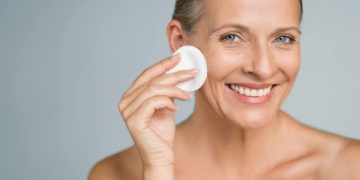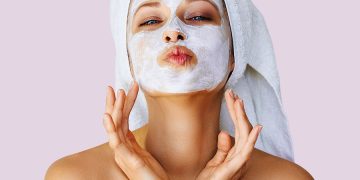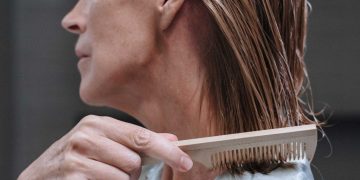Achieving healthy, glowing skin requires not just the right products but also the right habits. However, many of us are unknowingly making skincare mistakes that could be hindering our skin’s true potential. From over-exfoliating to neglecting sun protection, skincare missteps are more common than you might think. In this guide, we’ll explore the most common skincare mistakes and provide practical advice on how to avoid them, ensuring your skin remains as healthy and radiant as possible.
1. Over-Cleansing Your Skin
While it’s essential to cleanse your skin daily, many people overdo it, thinking that frequent washing will prevent acne or keep their skin cleaner. Over-cleansing can strip the skin of its natural oils, leading to dryness, irritation, and even an overproduction of oil as the skin tries to compensate.
1.1 Why Over-Cleansing is Harmful
Cleansers are designed to remove dirt, excess oil, and makeup, but if you cleanse too often or use harsh products, you disrupt the skin’s delicate moisture balance. Over-cleansing leads to the loss of vital lipids, which are responsible for keeping your skin hydrated and protected.
1.2 How to Avoid Over-Cleansing
Stick to cleansing your face twice a day—once in the morning and once before bed. Choose a gentle, hydrating cleanser that doesn’t contain harsh ingredients like sulfates or alcohol. If you have dry skin, consider using a cream-based or oil-based cleanser.
Tip: If your skin feels tight or dry after cleansing, you’re likely over-cleansing. Switch to a gentler routine or reduce the frequency of washing.
2. Using the Wrong Products for Your Skin Type
Using skincare products that don’t suit your skin type can be one of the most common yet overlooked mistakes. People often fall into the trap of using trendy products or those recommended by others without considering their unique skin needs.
2.1 Why Skin Type Matters
Every skin type—whether oily, dry, combination, or sensitive—requires specific formulations to maintain balance and health. For example, if you have dry skin, using products made for oily skin may worsen dehydration, and vice versa. Likewise, using a product with a high alcohol content on sensitive skin can cause irritation.
2.2 How to Choose Products for Your Skin Type
Identify your skin type and use products that cater specifically to it. For oily skin, look for oil-free and mattifying products. For dry skin, opt for rich, hydrating formulas that contain ingredients like hyaluronic acid, ceramides, or glycerin. Combination skin may benefit from balanced products, while sensitive skin should avoid strong fragrances and harsh chemicals.
Tip: Pay attention to how your skin reacts to products. If irritation, redness, or breakouts occur, it’s time to reassess your choices.
3. Skipping Sunscreen Every Day
Sun protection is one of the most important aspects of any skincare routine, yet many people neglect to wear sunscreen, particularly during cloudy days or in the winter. UV rays can cause long-term skin damage, including premature aging, pigmentation, and an increased risk of skin cancer.
3.1 Why Sunscreen is Non-Negotiable
The sun’s harmful UVA and UVB rays can penetrate the skin and cause irreversible damage. UVA rays accelerate aging by breaking down collagen, while UVB rays are responsible for sunburns and skin cancer. Regular sunscreen application helps protect your skin from these harmful effects.
3.2 How to Make Sunscreen a Habit
Choose a broad-spectrum sunscreen with SPF 30 or higher and apply it every day, regardless of the weather. Make sure to reapply every two hours when you’re outside, especially if you’re sweating or swimming.
Tip: Look for sunscreens that contain additional skin-loving ingredients like antioxidants or niacinamide, which can further protect your skin from environmental stressors.
4. Over-Exfoliating Your Skin
Exfoliating is important for removing dead skin cells and promoting cell turnover, but over-exfoliating can cause significant damage to the skin. Excessive exfoliation, especially with harsh physical scrubs or strong chemical exfoliants, can strip the skin of essential moisture, causing irritation, redness, and even breakouts.
4.1 Why Over-Exfoliation Can Harm Your Skin
The outermost layer of your skin, the stratum corneum, serves as a protective barrier against external irritants. Over-exfoliating disrupts this barrier, leading to sensitivity, dehydration, and even long-term damage.
4.2 How to Exfoliate Correctly
Exfoliate your skin 1-2 times per week using gentle products. For dry or sensitive skin, consider using enzyme-based exfoliants or mild AHA (alpha hydroxy acid) products. For oily or acne-prone skin, BHAs (beta hydroxy acids) like salicylic acid can be effective in keeping pores clear.
Tip: Listen to your skin—if it feels raw or irritated, it’s time to cut back on exfoliating.
5. Ignoring Your Neck and Décolletage
When applying skincare products, many people focus solely on their face and forget to treat the neck and décolletage (upper chest) areas. However, these areas are just as prone to signs of aging, including fine lines, sagging, and sun damage.
5.1 Why the Neck and Décolletage Matter
The skin on your neck and chest is thinner and more delicate than that on your face, making it more vulnerable to environmental damage. Neglecting these areas can result in visible aging, including deep wrinkles and pigmentation, that doesn’t match the youthful appearance of your face.
5.2 How to Include Your Neck and Chest in Your Routine
When applying your face creams and serums, extend the product down to your neck and chest. Look for products that are specifically designed for the neck area, as they often contain ingredients that target sagging and wrinkles.
Tip: Don’t forget sunscreen on your neck and chest every day to protect against UV-induced damage.

6. Using Too Many Products or Layers
Many skincare enthusiasts often fall into the trap of layering too many products, believing that the more products they use, the better the results. However, overloading the skin with multiple products can lead to clogged pores, irritation, and an imbalanced skin barrier.
6.1 Why Less is Sometimes More
The skin can only absorb a certain amount of active ingredients at a time. When you layer too many products, they can interfere with each other’s effectiveness, and some products may not penetrate properly.
6.2 How to Simplify Your Routine
Keep your skincare routine simple by focusing on the essentials: a gentle cleanser, a moisturizer, a sunscreen, and any treatments or serums targeting your specific skin concerns. Avoid layering too many actives at once, and introduce new products slowly to monitor how your skin reacts.
Tip: If your skin feels irritated or breaks out after using multiple products, it’s time to pare down and assess which products may not be working for you.
7. Not Removing Makeup Before Bed
Going to bed with makeup on is one of the most damaging mistakes you can make for your skin. Makeup can clog pores, leading to acne, dullness, and premature aging. Properly removing makeup ensures that your skin can breathe and regenerate overnight.
7.1 Why Makeup Removal is Critical
Throughout the day, makeup, pollutants, and dirt accumulate on your skin. If not removed, these can mix with oils, clogging pores and leading to breakouts and dullness. Removing makeup is the first step in any nighttime skincare routine to prevent damage.
7.2 How to Remove Makeup Effectively
Use a gentle makeup remover or micellar water to break down and remove makeup, followed by your regular cleanser to thoroughly clean your skin. If you wear heavy makeup, consider double-cleansing for the best results.
Tip: Never skip makeup removal, even if you’re tired. It’s crucial for maintaining clear, healthy skin.
8. Not Giving Products Enough Time to Work
In today’s fast-paced world, we often expect immediate results from skincare products. However, most skincare treatments take time to show visible effects, and impatience can lead to abandoning products too soon or overuse in hopes of faster results.
8.1 Why Patience is Key
Most skincare products need at least 4-6 weeks to show significant results. Actives like retinoids, Vitamin C, or exfoliating acids can take time to visibly affect skin texture, tone, and clarity.
8.2 How to Manage Expectations
Give your products time to work. Stick with a consistent routine and resist the urge to constantly try new products in hopes of instant results. If after 6 weeks you haven’t seen improvements, it may be time to reassess the products you’re using.
Tip: Keep track of your skin’s progress with photos or notes to better assess long-term changes.
Conclusion: How to Achieve Healthier, Glowing Skin
By avoiding these common skincare mistakes and making the necessary adjustments to your routine, you can significantly improve the health and appearance of your skin. Understanding your skin’s needs, being patient, and using the right products in moderation can help you avoid many of these pitfalls and get the glowing skin you’ve always wanted. Your skin is unique, and with the right care, it can thrive through every season and condition.












































